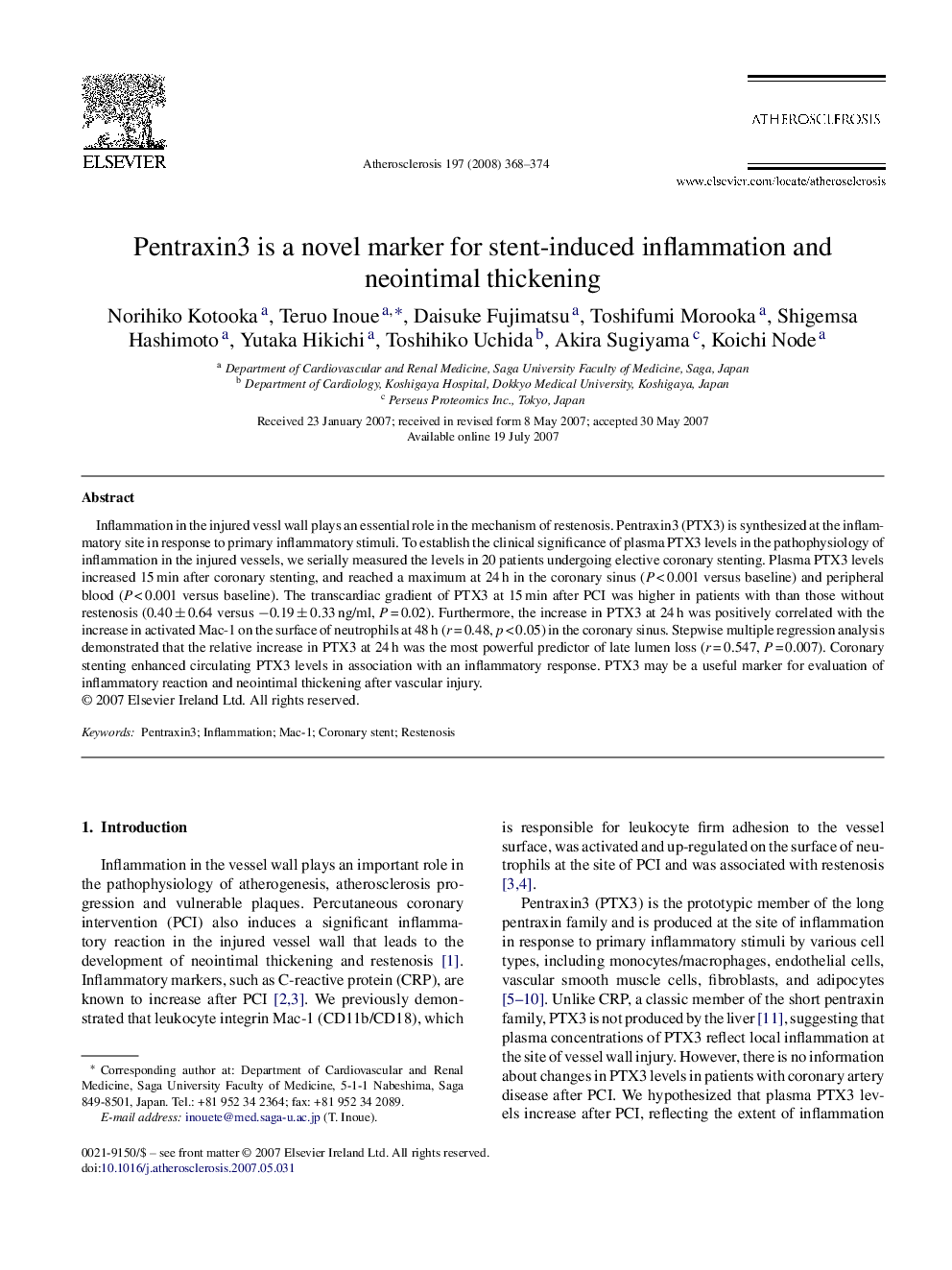| Article ID | Journal | Published Year | Pages | File Type |
|---|---|---|---|---|
| 2894767 | Atherosclerosis | 2008 | 7 Pages |
Inflammation in the injured vessl wall plays an essential role in the mechanism of restenosis. Pentraxin3 (PTX3) is synthesized at the inflammatory site in response to primary inflammatory stimuli. To establish the clinical significance of plasma PTX3 levels in the pathophysiology of inflammation in the injured vessels, we serially measured the levels in 20 patients undergoing elective coronary stenting. Plasma PTX3 levels increased 15 min after coronary stenting, and reached a maximum at 24 h in the coronary sinus (P < 0.001 versus baseline) and peripheral blood (P < 0.001 versus baseline). The transcardiac gradient of PTX3 at 15 min after PCI was higher in patients with than those without restenosis (0.40 ± 0.64 versus −0.19 ± 0.33 ng/ml, P = 0.02). Furthermore, the increase in PTX3 at 24 h was positively correlated with the increase in activated Mac-1 on the surface of neutrophils at 48 h (r = 0.48, p < 0.05) in the coronary sinus. Stepwise multiple regression analysis demonstrated that the relative increase in PTX3 at 24 h was the most powerful predictor of late lumen loss (r = 0.547, P = 0.007). Coronary stenting enhanced circulating PTX3 levels in association with an inflammatory response. PTX3 may be a useful marker for evaluation of inflammatory reaction and neointimal thickening after vascular injury.
